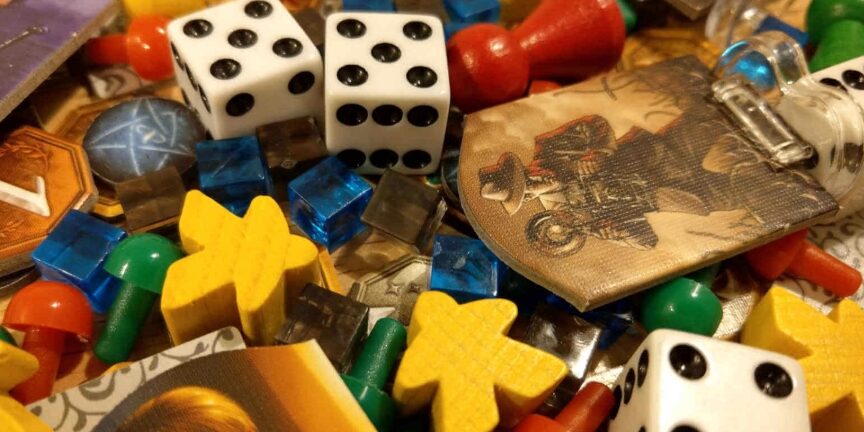Games often broken down into smaller elements. This is done to help designers create them and to help scholars study them. This article will focus on a more formal definition and identification of the elements that make up the important parts of tabletop games: game component. It includes major components, common components, identification components, randomization components, and measurement components. This article will focus on the major components in tabletop games.
First what are game components?
Game components are the physical representations of the game mechanics and dynamics that exist in a game. In tabletop games, these are the physical pieces that players interact with throughout the game. They often have a variety of purposes, including: representing information; positions; and relationships in the game. They can used to track resources; provide a game scope; and show the passage of time; accumulation of points; or element randomization.
Game components provided as the primary way players interact with tabletop games. In fact, for most players, these components are the tabletop game to them. This is what they remember when they play a tabletop game. Most people can name some of the major pieces in Monopoly. Many can tell you that Catan played on a board with hexagons. And almost everyone can tell you that poker played with cards and craps played with dice.
Second what are the different types of components?
The list of components included in most board games includes: Boards, Mats, Boxes, Booklets, Pads, Screens, Cards, Tiles, Chits, Cubes, Standees, Pawns, Dice, Spinners, Sliders, Dials, Counters, Timers.
Third how to differentiate components based on their functions?
Based on the known uses of components, components can divided into five main areas: Main Game Component, Versatile Game Components, Identification Game Pieces, Probabilistic Board Game Pieces and Measurement Board Game Piece.













